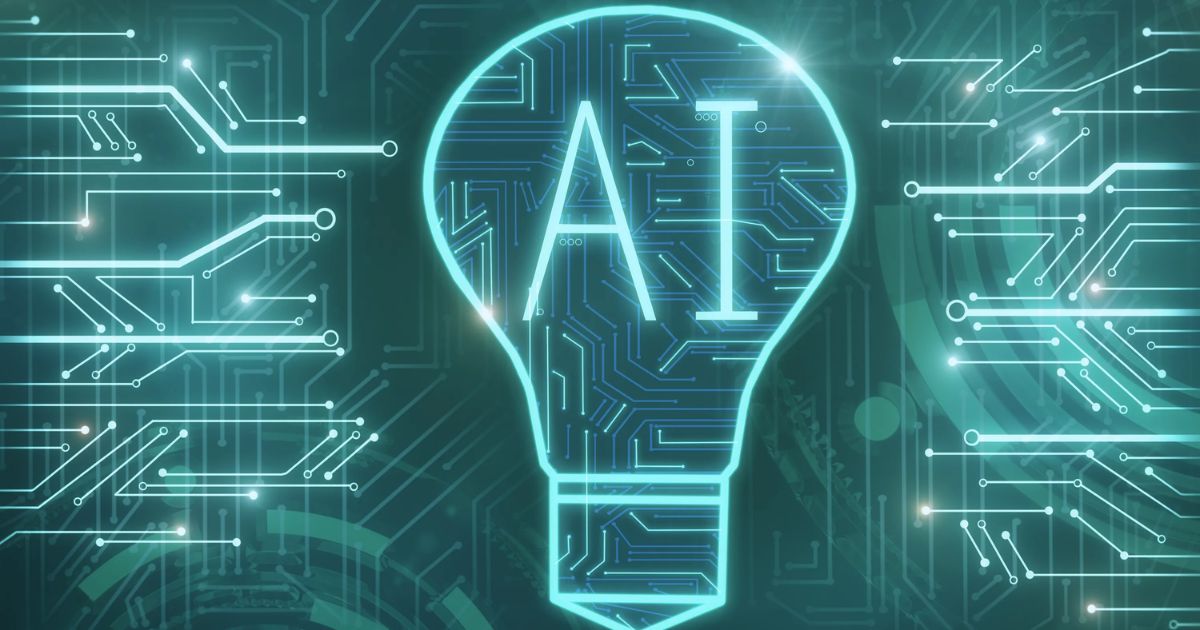Testing AI for scalability is a vital part of ensuring that the system can handle increased loads, data, and users efficiently. As organizations integrate AI into their processes, it becomes crucial to assess how well these systems can grow and adapt.
Scalability testing evaluates an AI system’s performance, reliability, and effectiveness as its workload increases. This article will explore various strategies and methodologies for testing AI for scalability.
Understanding Scalability in AI
Scalability refers to the ability of a system to grow and manage increased demand. For AI Testing Improve systems, this means being able to process more data, serve more users, and maintain performance levels as loads change.
The importance of scalability in AI cannot be overstated, as it impacts performance, user experience, and operational costs.
Types Of Scalability
- Vertical Scalability: The process of adding more resources to a single node, such as increasing CPU, memory, or storage.
- Horizontal Scalability: The method of adding more nodes or machines to handle the workload. This is often more cost-effective and flexible than vertical scaling.
Understanding these types of scalability is essential for developing effective testing strategies.
Key Metrics For Scalability Testing
Testing for scalability involves monitoring various metrics to assess performance. Some of the key metrics include:
- Throughput: The number of transactions or data points processed in a given time.
- Latency: The time it takes for the system to respond to a request.
- Resource Utilization: How efficiently the system uses its resources (CPU, memory, disk, etc.).
- Error Rate: The frequency of errors during operation under increased loads.
Monitoring these metrics will provide insights into the AI system’s performance and areas for improvement.
Preparing For Scalability Testing

The preparation phase is crucial for effective scalability testing. The following steps are necessary to ensure a smooth testing process:
- Define Objectives: Clearly outline the goals of the scalability test. What aspects of the system do you want to evaluate?
- Identify Workloads: Determine the types of workloads that the AI system will face. This includes peak usage times, user behavior, and data sizes.
- Set Up the Testing Environment: Create a controlled environment that mimics real-world conditions. This may involve setting up virtual machines, databases, and network configurations.
- Choose Testing Tools: Select appropriate tools to conduct the scalability tests. Common tools include Apache JMeter, LoadRunner, and Gatling.
Designing Test Scenarios
The next step is to design test scenarios that mimic expected real-world usage. This involves creating various use cases that the AI system might encounter. The test scenarios should include:
- Normal Load: Simulating average user activity to assess baseline performance.
- Peak Load: Generating maximum user activity to test system limits.
- Stress Load: Pushing the system beyond its limits to identify breaking points.
Creating these scenarios allows testers to understand how the system behaves under different conditions.
Executing Scalability Tests
Once the preparation is complete, it’s time to execute the tests. The execution phase involves the following steps:
- Run Tests Sequentially: Start with normal load tests, then progress to peak and stress load tests.
- Monitor Performance: Continuously monitor the key metrics established earlier. This includes checking throughput, latency, and resource utilization.
- Collect Data: Gather data from the tests for analysis. This data will be essential for evaluating performance and identifying areas for improvement.
Analyzing Test Results
After executing the tests, it’s crucial to analyze the results. Look for patterns and anomalies in the collected data. Key questions to consider include:
- Did the AI system maintain performance under increased load?
- What was the maximum load the system could handle before performance degraded?
- Were there any bottlenecks that emerged during testing?
By answering these questions, teams can identify strengths and weaknesses in the AI system.
Identifying Bottlenecks

Bottlenecks are points in the system where performance slows down or fails. Identifying these bottlenecks is essential for optimizing scalability. Common areas to investigate include:
- Data Processing: Examine how quickly the AI can process incoming data. If data ingestion is slow, it may require optimization.
- Network Latency: Analyze network performance. Slow networks can significantly impact AI performance, especially for distributed systems.
- Resource Allocation: Ensure that resources are allocated efficiently. Misconfigured resources can lead to underperformance.
Strategies For Addressing Bottlenecks
Once bottlenecks are identified, it’s essential to develop strategies to address them. Here are some common approaches:
- Optimize Algorithms: Review the algorithms used by the AI system. Improving their efficiency can enhance performance.
- Scale Infrastructure: If vertical scaling is not sufficient, consider horizontal scaling to distribute the load across multiple nodes.
- Load Balancing: Implement load balancing to distribute workloads evenly across resources, preventing any single resource from becoming overwhelmed.
Continuous Testing For Scalability
Testing for scalability should not be a one-time event. As the AI system evolves, continuous testing is necessary to ensure that it remains scalable. Regular testing helps identify new bottlenecks and performance issues that may arise over time.
Implementing Continuous Integration
Integrating scalability testing into the continuous integration (CI) process is crucial. This approach involves:
- Automating Tests: Use automation tools to run scalability tests regularly. This ensures that performance is continuously monitored.
- Setting Performance Baselines: Establish baselines for performance metrics. Compare new test results against these baselines to identify changes.
- Feedback Loops: Create feedback loops between development and testing teams. This encourages collaboration to address performance issues as they arise.
Benefits Of Testing AI For Scalability
Testing AI for scalability offers several benefits that can enhance overall system performance:
- Improved Performance: Identifying and addressing bottlenecks leads to enhanced performance.
- Cost Efficiency: Understanding how to scale effectively can save costs associated with over-provisioning resources.
- Increased User Satisfaction: A scalable AI system can handle more users and data without sacrificing performance, leading to improved user experiences.
Enhancing Reliability
The reliability of an AI system is closely linked to its scalability. A scalable system is better equipped to handle fluctuations in demand, reducing the likelihood of crashes or errors during peak usage. This reliability is essential for maintaining user trust.
Understanding Reliability
Reliability can be defined as the probability that a system will perform its intended function without failure over a specified period. It is a crucial metric in fields like engineering, software development, and manufacturing. High reliability often correlates with customer satisfaction, lower operational costs, and reduced risk of failure.
Key Characteristics Of Reliable Systems
- Consistency: Reliable systems perform consistently under various conditions.
- Durability: These systems can withstand wear and tear over time.
- Maintainability: Easy maintenance and quick repairs contribute to overall reliability.
- Redundancy: Having backup components can prevent failure when primary components fail.
Understanding these characteristics is vital for developing strategies to enhance reliability.
Assessing Current Reliability Levels

The first step in enhancing reliability is to assess the current reliability levels of systems and processes. This assessment can be conducted through various methods:
- Failure Analysis: Investigate past failures to identify common issues and their root causes.
- Reliability Testing: Conduct tests to evaluate system performance under different conditions.
- User Feedback: Gather insights from users to identify areas of concern and potential improvements.
Key Metrics For Reliability Assessment
- Mean Time Between Failures (MTBF): The average time between failures in a system.
- Mean Time to Repair (MTTR): The average time it takes to repair a system after a failure.
- Failure Rate: The frequency of failures over a specified period.
These metrics provide valuable insights into the reliability of systems and help guide improvement efforts.
Strategies For Enhancing Reliability
Enhancing reliability involves implementing a combination of strategies tailored to specific systems and processes. Here are some effective approaches:
Design For Reliability
The design phase is crucial for ensuring the reliability of systems. Engineers and designers should prioritize reliability by:
- Using Quality Materials: Selecting durable materials can prevent premature wear and tear.
- Simplifying Designs: Reducing complexity can decrease the likelihood of failure. Simple systems are often more reliable.
- Incorporating Redundancy: Designing systems with backup components can ensure functionality even when primary components fail.
Implementing Regular Maintenance
Regular maintenance is essential for enhancing reliability. Maintenance strategies include:
- Scheduled Inspections: Regularly inspect systems to identify potential issues before they lead to failures.
- Preventive Maintenance: Conduct routine maintenance tasks, such as cleaning, lubricating, and replacing worn parts.
- Predictive Maintenance: Use data analytics and sensors to predict when maintenance should be performed based on actual system performance.
Enhancing Training And Skills
A well-trained workforce is crucial for maintaining reliable systems. Organizations should focus on:
- Providing Comprehensive Training: Ensure that employees understand the systems they work with and how to maintain them.
- Encouraging Continuous Learning: Promote a culture of ongoing education to keep employees updated on best practices and new technologies.
Utilizing Advanced Technology
Technology can play a significant role in enhancing reliability. Organizations can leverage:
- Automation: Implementing automated systems can reduce human error and increase consistency.
- Monitoring Tools: Use IoT devices and monitoring software to track system performance in real time.
- Data Analytics: Analyze data to identify patterns, trends, and potential failure points.
Establishing A Culture Of Reliability
Creating a culture that prioritizes reliability involves:
- Encouraging Accountability: Employees should take ownership of their roles and responsibilities.
- Recognizing Contributions: Reward and acknowledge individuals and teams that contribute to enhancing reliability.
- Fostering Open Communication: Encourage employees to report issues and suggest improvements without fear of repercussions.
Testing And Validation

After implementing reliability-enhancing strategies, it is essential to validate their effectiveness through rigorous testing. This involves:
- Conducting Reliability Tests: Perform tests under various conditions to assess system performance.
- Analyzing Results: Evaluate test results to identify improvements and areas that still need attention.
- Iterating and Refining: Continuously refine strategies based on testing outcomes and user feedback.
Common Reliability Testing Methods
- Stress Testing: Assess how systems perform under extreme conditions.
- Load Testing: Evaluate system performance under various loads to identify potential bottlenecks.
- Failure Mode and Effects Analysis (FMEA): Systematically analyze potential failure modes and their impact.
Continuous Improvement
Enhancing reliability is not a one-time effort. Organizations should adopt a mindset of continuous improvement by:
- Regularly Reviewing Processes: Assess processes periodically to identify opportunities for enhancement.
- Embracing Innovation: Stay updated on new technologies and practices that can improve reliability.
- Gathering Feedback: Continually solicit feedback from users and stakeholders to inform improvement initiatives.
Frequently Asked Questions
What is scalability in AI?
Scalability in AI refers to the ability of an AI system to handle increased workloads, such as more data or users, without losing performance.
Why is scalability testing important?
Scalability testing is crucial because it helps ensure that AI systems can grow and adapt to changing demands, maintaining performance and reliability.
What metrics are used in scalability testing?
Common metrics include throughput, latency, resource utilization, and error rates, which help assess the performance of AI systems under various loads.
How often should scalability testing be conducted?
Scalability testing should be conducted regularly, especially when there are significant changes to the system or as part of a continuous integration process.
Conclusion
Testing AI for scalability is essential for ensuring that systems can handle increasing demands effectively. The process involves preparing for tests, executing them, analyzing results, and continuously monitoring performance.
Investing in robust scalability testing methodologies will ultimately lead to more resilient and efficient AI technologies that can meet the challenges of a rapidly changing digital landscape.










